This repository contains a pytorch implementation for the paper: Disentangling factors of variation in deep representations using adversarial training (https://arxiv.org/abs/1611.03383), which was accepted at NIPS 2016. The paper proposes an adversarial architecture to disentangle factors of variation into two separate latent codes based on a single source of supervision.
The repository provides files necessary to train this architecture on MNIST dataset, while it can be generalised to other datasets in the paper by changing the data_loader and networks files.
The code has been tested with the following python interpreter and library versions:
- python 3.6.3
- pytorch 0.4.0
- torchvision 0.2.1
- argparse 1.1
- numpy 1.13.3
- matplotlib 2.2.2
- tensorboardX 1.2
We have used this work for comparison in our paper: Disentangling Factors of Variation with Cycle-Consistent Variational Auto-encoders (https://arxiv.org/abs/1804.10469). The code for our work is uploaded at https://github.com/ananyahjha93/cycle-consistent-vae.
Before we move on to the results, we mention some of the tricks/GAN hacks used in this implementation to stabilize the training:
-
"Training the discriminator only when the accuracy of the previous batch was less than 80%." This trick was first proposed in 'Learning a Probabilistic Latent Space of Object Shapes via 3D Generative-Adversarial Modeling' (http://3dgan.csail.mit.edu/papers/3dgan_nips.pdf), and we found the claim that it stabilizes training to be quite true. The idea is simple, if the discriminator is way ahead of the generator, the generator will not be able to extract good signal from the gradient of the discriminator.
-
"We train the generator 2 times for each iteration of discriminator training." (Opposite of this hack is mentioned on this repository of GAN hacks: https://github.com/soumith/ganhacks, i.e. train the discriminator more)
-
Instead of using an embedding layer to provide class labels as additional channels in the discriminator (GAN hacks: https://github.com/soumith/ganhacks), we pass pairs of images to the discriminator. This way, we reduce the level of supervision required to only pairwise instead of actual class labels. We also found that this method was faster and more stable than using an embedding layer.
We were able to replicate the visual results of disentangling factors of variation from the paper. The first column is MNIST, the second is 2D Sprites and the third is LINE-MOD. 'z dim' here refers to the dimensionality of the unspecified factors latent space (style latent space) described in the paper.
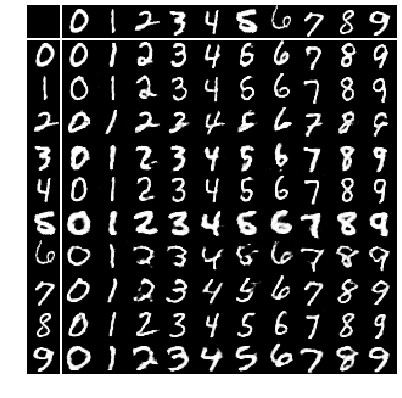 |
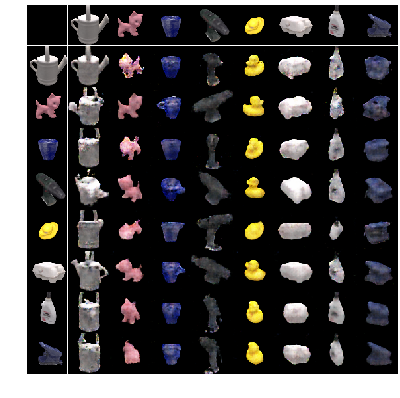 |
|
| z dim: 16 | z dim: 512 | z dim: 64 |
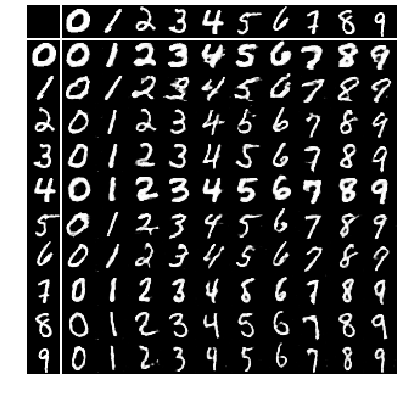 |
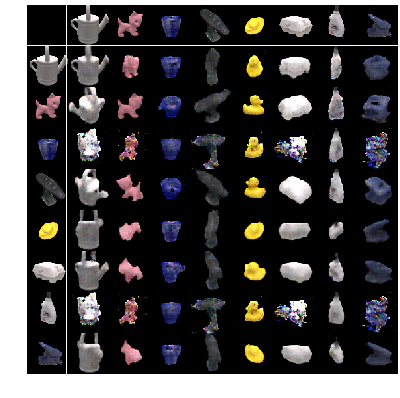 |
|
| z dim: 64 | z dim: 1024 | z dim: 256 |
In the table below, we present the results of classification on both the specified factors (class, s) and unspecified factors (style, z) latent codes. Ideally, the specified factors latent space should have a classification accuracy as high as possible and the unspecified factors latent space should have a classification accuracy as low as possible.
z - > unspecified factors latent space (style) | s -> specified factors latent space (class)
| Dataset | z dim | s dim | z train acc. | z test acc. | s train acc. | s test acc. |
|---|---|---|---|---|---|---|
| MNIST | 16 | 16 | 70.85 | 66.83 | 99.37 | 98.52 |
| MNIST | 64 | 64 | 74.94 | 72.20 | 99.94 | 98.64 |
| 2D Sprites | 512 | 64 | 12.05 | 11.98 | 99.18 | 96.75 |
| 2D Sprites | 1024 | 512 | 12.48 | 12.25 | 99.22 | 97.45 |
| LINE-MOD | 64 | 256 | 90.14 | 89.17 | 100.00 | 100.00 |
| LINE-MOD | 256 | 512 | 86.87 | 86.46 | 100.00 | 100.00 |
The following are t-SNE plots of the unspecified factors latent space (style latent space) for the MNIST dataset. Ideally they should not have any structure corresponding to class labels. As we see for the figure on left, the t-SNE plot does show structure hence proving that adversarial architectures, while producing good quality images, do not exactly produce disentangled representations. Instead, they train the decoder to ignore any class specific information present in the style latent space.
The plot on the right shows a style latent space that is highly mixed and it is difficult to see any structure in it. This is obtained when we reparameterize the output of style latent space as in a VAE training. This shows that reparameterization during training helps add to class confusion in the style latent space. The classification results presented above are taken after reparameterization. Even after reparameterization, although there is no visible structure, a trained classifier can still identify class labels for MNIST fairly easily. The same goes for LINE-MOD.
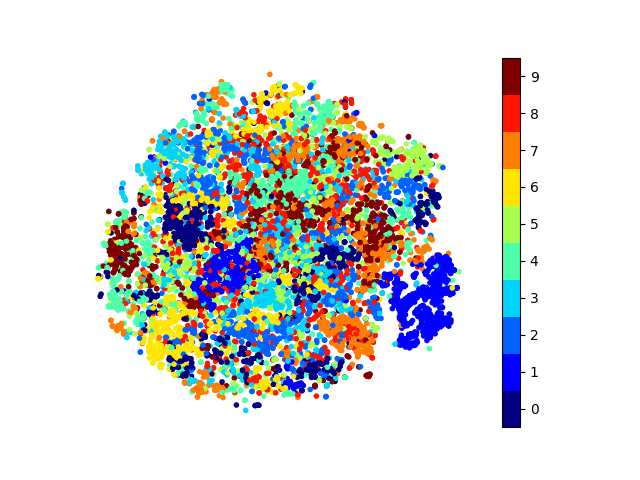 |
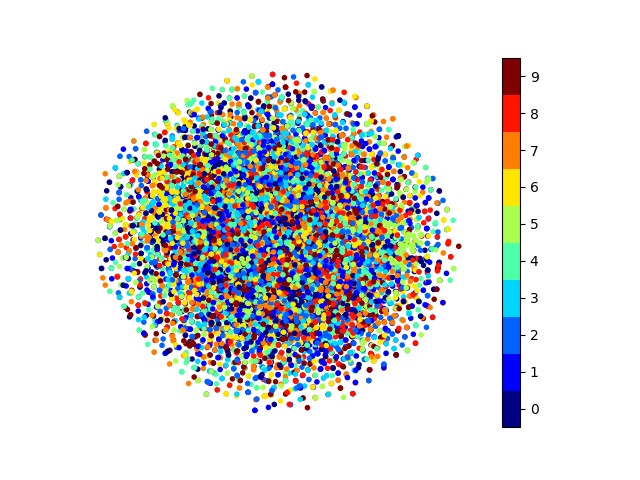 |
Finally, we also include graphs of different loss functions to show how they progressed during the training:
Reconstruction loss
 |
KL-divergence
 |
Generator loss
 |
Discriminator loss
 |
Discriminator accuracy
 |